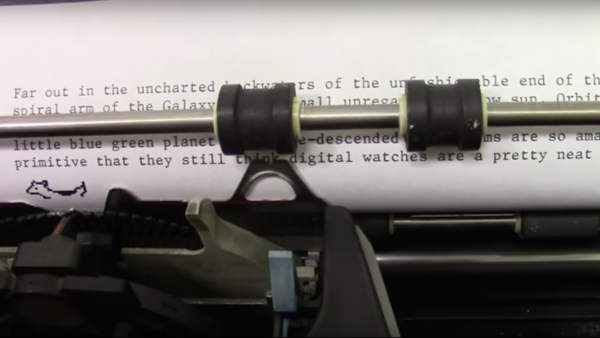If you have worked in an office that contained a typewriter, the chances are you’ve been in the workplace for several decades. Such has been the inexorable advance of workplace computing. It’s a surprise then to discover that one of the desirable toys from many decades ago, the Barbie Typewriter, is still available. Are hipster parents buying toy versions of vintage office machinery for their children to use in an ironic fashion?
Gone though are the plastic versions of mechanical typewriters that would have been the property of a 1970s child. The modern Barbie typist has an electronic typewriter at her fingertips, with a daisy-wheel printer. We’re treated to a teardown of the recent models courtesy of Crypto Museum, who reveal a hidden feature, Barbie’s typewriter can encrypt and decrypt messages.
Now the fact that a child’s toy boasts a set of simple substitution cyphers is hardly the kind of thing that will set the pulses of Hackaday readers racing, after all simple letter frequency analysis is hardly new. But of course, the Crypto Museum angle is only part of this story.
This toy is made in a suitably eye-watering shade of pink, and sold by Mattel with Barbie branding. But it didn’t start life as a Barbie product, instead it’s licensed from the Slovenian manufacturer Mehano. The original toy makes no secret of the crypto functions, but though they persist in the software on the Barbie version they are mysteriously absent from the documentation. The achievements of American women are such that they have given us high-level languages and compilers, or their software has placed men on the Moon, yet it seems when they are young a brush with elementary cryptology is beyond them in the way that it isn’t for their Slovenian sisters. This is no way to nurture a future Grace Hopper or Margaret Hamilton, though sadly if your daughter is a Lisa Simpson this is just one of many dumbed-down products she’ll be offered.
If you see a Barbie electronic typewriter in a yard sale or similar, and you can pick it up for a few dollars, buy it. It’s got a simple daisywheel printer mechanism that looks eminently hackable. Just don’t buy it for your daughter without also printing out the Crypto Museum page for her as the missing manual.
When the Martian lander running her code has touched down safely, you’ll be glad you did.
Via Adafruit.













